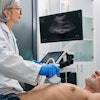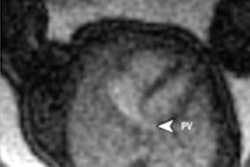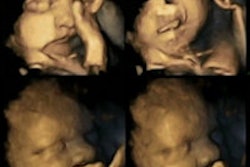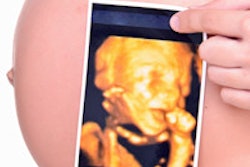ORLANDO, FL - Fetal imaging has come a long way, but it will take a fresh mindset and broad collaboration to yield technical advances in the future, according to a presentation on Sunday at the American Institute of Ultrasound in Medicine (AIUM) annual meeting.
Searching for new discoveries and solutions to solve challenges in fetal imaging will sometimes require out-of-the-box thinking, said Dr. Wesley Lee, section chief for women's and fetal imaging at Baylor College of Medicine. He discussed the future directions of fetal imaging during the 2015 William J. Fry Memorial Lecture at AIUM 2015.
"We must explore different ways to evaluate the fetus through multidisciplinary collaboration," Lee said. "[Interactions with] government and industry will [also] continue to be important drivers of innovation for these scientific discoveries that translate to clinical practice. Finally, we should also remember our core obligation to mentor others to fuel the process of discovery."
Ultrasound has progressed considerably from its early days. For example, technical advances over the years have led to the development of power Doppler, viewing fetal hearts at high frame rates, and 3D ultrasound images of fetal anatomy, he said. Furthermore, 3D ultrasound data can now be visualized using sophisticated processing techniques that can be performed even on a mobile device.
To better understand the seeds of innovation in fetal imaging, Lee asked recent winners of the International Society of Ultrasound in Obstetrics and Gynecology (ISUOG) Ian Donald Gold Medal what they considered to be the most important innovation in fetal imaging during their career. He also asked them to name the single most important technical challenge that future innovations in fetal diagnostic imaging must address.
The responses for the most important innovations included the digital scan converter, grayscale imaging, real-time imaging, pulsed-wave and color Doppler, the vaginal transducer, and 3D/4D ultrasound, Lee said.
As for future technical challenges, they pointed to issues such as the need for automated measurements for blood flow/perfusion/volume and to provide true real-time volume imaging with full resolution in all planes. They would also like ultrasound to be simpler, more affordable, and more portable for clinical care, according to Lee.
Other challenges included the need for a standardized format of volume data between manufacturers, evaluation of early pregnancy and growth, maternal obesity, pattern recognition technology for automated diagnosis, and the ability to predict the evolution of fetal disease relative to outcome.
One respondent noted "that all of his life, people have said that ultrasound has now reached a plateau, and that we must now, for the future, take existing technology and work out new applications," Lee said.
On the other hand, another award winner told him that the "biggest technical challenge is for the ultrasound companies to stop development of fancier machines and to educate a broader base of users into the maximum use of the machines we currently have. We have had color Doppler for 25 years now, but it is not in general use in cardiac scanning during the routine scan, despite it being available on every machine."
Nonetheless, fetal medical imaging continues to move forward. Some examples of recent, promising advances include intelligent navigation of fetal cardiac ultrasound volumes, noninvasive prediction of fetal lung maturity, photoacoustic CT, advanced applications for fetal MR, and ultrasound and MRI image fusion, Lee said.
"I have great expectations for the way forward in fetal imaging," he said.




















